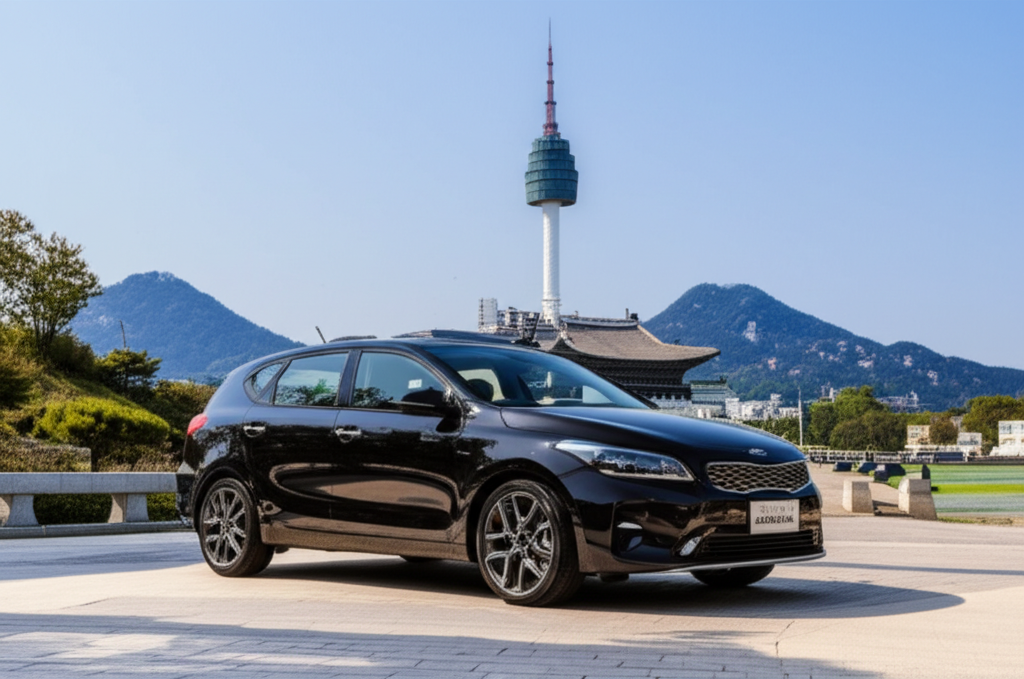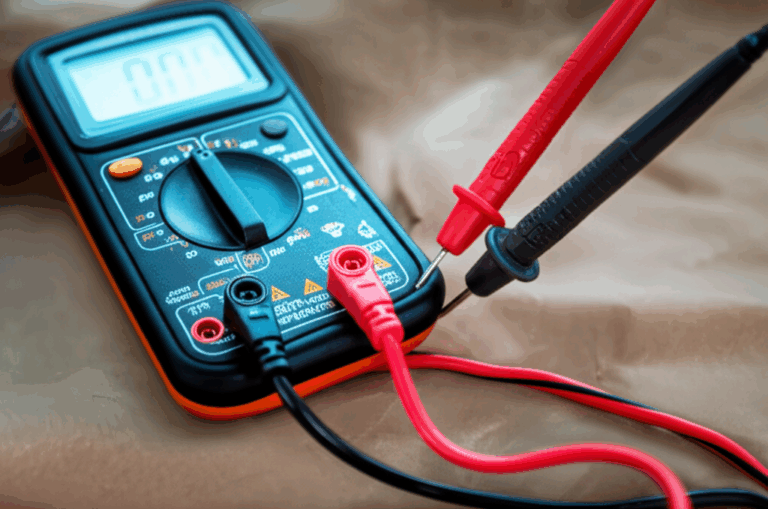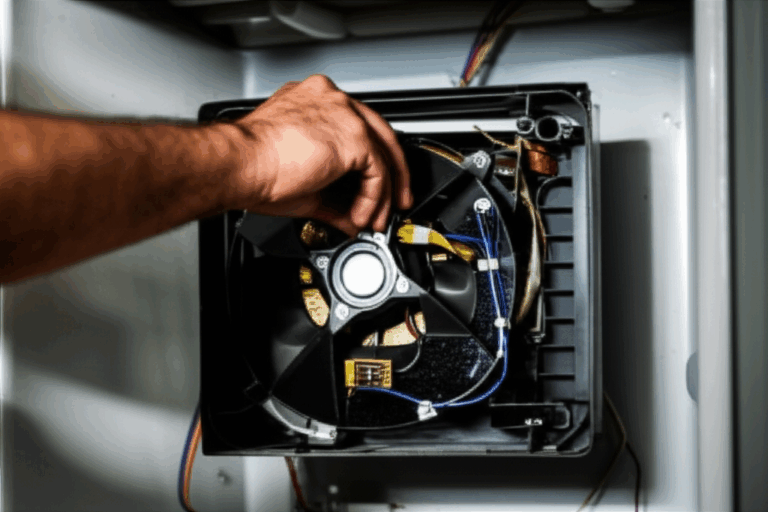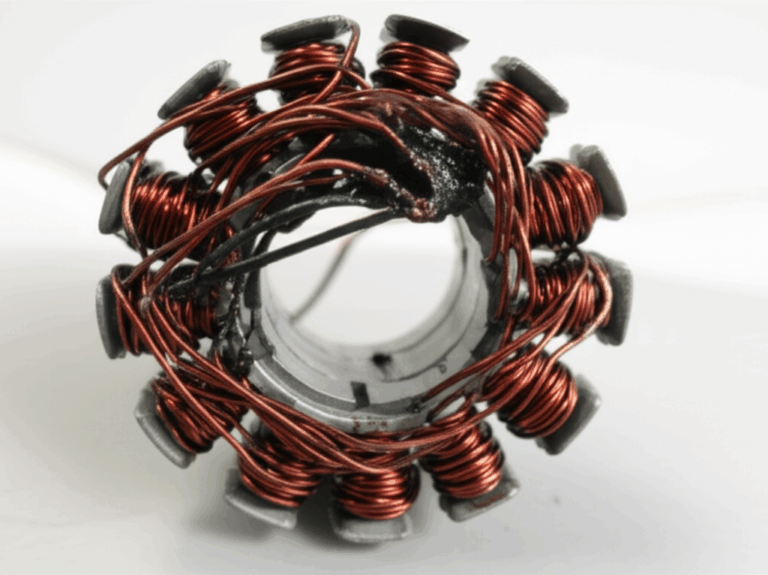
Does Hyundai Own Kia Motors? Understanding Their Powerful Automotive Relationship
- Table of Contents
- Introduction: The short answer and why it matters
- How I learned the Hyundai–Kia story first-hand
- The backstory: From crisis to acquisition and revival
- Hyundai Motor Group structure explained simply
- Shared resources yet distinct identities
- Common platforms and components
- Joint R&D and future tech
- Design languages and target audiences
- Does Hyundai control Kia’s decisions
- Are Hyundai and Kia competitors or teammates
- What this means for you as a buyer
- Key stats and milestones at a glance
- FAQs about Hyundai, Kia, Genesis, and more
- Final take
Introduction: The short answer and why it matters
Here’s the straight truth from my experience researching and testing these cars. Yes Hyundai Motor Group owns a significant stake in Kia Corporation. Hyundai Motor Company is the largest shareholder in Kia which gives the Group effective control. Yet Kia still operates as a distinct brand with its own leadership and design direction.
That tension is what makes this relationship powerful. You get the scale and engineering depth of a global giant along with the lively differences between Hyundai and Kia in looks tuning and vibe.
How I learned the Hyundai–Kia story first-hand
I first noticed the connection when I drove a Kia EV6 and a Hyundai Ioniq 5 back to back. The EV6 felt taut and sporty. The Ioniq 5 felt calm and airy. Both sprinted like a startled cat. The sales rep pointed at the skateboard-like chassis under both cars and said they share the same EV platform. He meant E-GMP. That sent me down the rabbit hole.
I toured spec sheets. I read annual reports and interviews with designers. I poked around forums where owners compare part numbers. Over time the picture clicked into place. Hyundai Motor Group is the parent. Hyundai Motor Company holds about a third of Kia’s shares according to recent filings. The brands share platforms powertrains and suppliers. They do not share a badge or a personality.
Once you see it you can’t unsee it. Park a Hyundai Palisade next to a Kia Telluride. The bones line up. The faces don’t.
The backstory: From crisis to acquisition and revival
The Hyundai–Kia relationship started in a storm. Kia ran into deep financial trouble during the 1997 Asian Financial Crisis. Bankruptcy threw Kia into a bidding war. Ford sniffed around. Hyundai Motor Company moved fast.
In 1998 Hyundai acquired a controlling stake in Kia. Reports from that time put the initial investment around $1.7 billion for roughly 51 percent. Later capital increases diluted the exact percentage. Hyundai stayed the anchor. That stability and shared engineering helped Kia reboot its lineup and reputation.
I still remember the first Kia that made me do a double take. The Stinger. That car told the world a new Kia had arrived.
Hyundai Motor Group structure explained simply
Let me demystify the corporate tree. South Korea has large family-controlled conglomerates called chaebol. Hyundai Motor Group is one of them. Within the Group you’ll find:
- Hyundai Motor Company: Makes Hyundai-branded vehicles and owns a large stake in Kia.
- Kia Corporation: A separate automaker with its own CEO and board.
- Genesis: The premium brand spun off from Hyundai. Think luxury and tech.
- Hyundai Mobis: Big on modules electronics and parts. A crucial supplier to both brands.
- Hyundai Steel Hyundai Wia Hyundai Glovis Hyundai Kefico and others: These companies supply materials components logistics and systems. They help the Group move fast and keep costs in check.
In the United States you’ll run into Hyundai Motor America and Kia America. Each runs its own dealer network marketing and service. Globally the Group coordinates strategy and investments yet the car brands keep enough independence to stay fresh.
Shared resources yet distinct identities
This is where the sausage gets made. In the best way.
Common platforms and components
Hyundai and Kia share engines transmissions chassis architectures infotainment software and safety systems across many models. That’s why a Hyundai Tucson and a Kia Sportage feel like cousins. Same goes for Santa Fe and Sorento. Palisade and Telluride. Elantra and Forte. You get the idea.
On the EV side the Electric Global Modular Platform E-GMP acts like a blank canvas for multiple brands. Hyundai Ioniq 5 Kia EV6 and Genesis GV60 all ride on it. Same 800-volt architecture. Same fast-charging potential. Very different personalities.
Under the skin this shared approach relies on advanced components you rarely see but always feel. For example EV drive units and hybrid motors depend on precision laminations inside the stator and rotor. If you’re curious about that hardware you can dig into:
- What goes into modern electrical steel laminations that reduce losses and boost efficiency
- How a stator core lamination stack shapes torque delivery and thermal performance
- Why the geometry and materials in a rotor core lamination matter for smooth power at high RPM
Hyundai and Kia benefit from Group-wide sourcing and engineering for these parts. That synergy trims costs and shortens development time which shows up in the sticker price and the tech you get for it.
Joint R&D and future tech
The Namyang R&D Center near Seoul acts like mission control. Teams from both brands work on next-gen batteries software platforms autonomous driving and fuel cells. I’ve watched their progress model by model. Driver assistance gets smarter. Infotainment gets faster. Range creeps up. Charging speeds step down in minutes. That’s the compound interest of shared research.
Examples:
- E-GMP for EVs with 400/800-volt charging architecture
- Investment in hydrogen fuel cells for commercial and select passenger projects
- ADAS stacks that evolve from lane-centering and smart cruise to hands-off features in specific conditions
- Platform architectures that support multiple wheelbases body styles and battery sizes
Design languages and target audiences
Shared parts don’t mean shared faces. Each brand plays a different tune.
- Hyundai leans into technology-forward clean shapes and a wide mainstream sweet spot. They call the design theme “Sensuous Sportiness.”
- Kia chases bold graphics athletic stances and youthful energy. You’ll hear “Opposites United” from their studios.
I see this split every time I hop between a Tucson and a Sportage or a Palisade and a Telluride. Same toolkit different artists.
Does Hyundai control Kia’s decisions
Short version. Hyundai Motor Company is the largest shareholder in Kia with roughly 33.88 percent as shown in recent investor materials. That stake gives Hyundai Motor Group significant influence. Kia still runs as a separate corporation with its own board product plans and brand voice.
Inside the Group you’ll find committees and shared programs that coordinate investments platforms and standards. You won’t see a single executive green-lighting a Hyundai and a Kia in one stroke. You will see shared business cases that support two distinct vehicles on the same bones.
If you’ve ever worked inside a big company the dynamic will feel familiar. Shared budget. Shared labs. Separate product managers fighting for their customer.
Are Hyundai and Kia competitors or teammates
Both. They compete on the showroom floor. They also cooperate behind the scenes. That “co-opetition” pushes them to sharpen quality and design while letting the Group cover more of the market.
I like that setup. Internal competition keeps teams honest. Group-level strategy avoids tripping over each other. Hyundai might target the core buyer. Kia might go edgier and sportier. Both stand taller against Toyota Volkswagen GM and the rest.
What this means for you as a buyer
Let’s talk practical takeaways because that’s what you care about when shopping.
- Value and quality: Shared engineering and R&D mean you get strong technology at aggressive prices. J.D. Power and other studies often rank both brands well in initial quality and dependability.
- Powertrains: Expect similar engines transmissions and hybrid or EV components across pairs of models. Performance tuning can differ which you’ll feel on the road.
- Service and parts: Hyundai Mobis and shared suppliers feed both brands. Yet dealers and warranties run separately. Parts can overlap model to model though not all parts will swap one to one.
- Design and features: Hyundai tends to look clean and tech-forward. Kia often brings bolder designs and trims that feel a touch sportier. Sit in both. You’ll know right away which one speaks your language.
- EVs: If rapid charging matters look at E-GMP models like Ioniq 5/6 and EV6. Same charging backbone different personalities.
- Future upgrades: Over-the-air updates and evolving ADAS features roll out across both brands. You’ll see steady improvements without trading your car every year.
If you’re a tech nerd like me you’ll also appreciate how motor efficiency comes from small details. Tighter tolerances and smarter motor core laminations can shave energy losses and heat which adds range and performance without changing the battery.
Key stats and milestones at a glance
I keep a short list of facts handy when friends ask about Hyundai and Kia.
- Ownership: Hyundai Motor Company is Kia’s largest shareholder with an equity stake around 33.88 percent based on recent filings.
- Acquisition year: 1998 after the 1997 crisis pushed Kia into bankruptcy and a bidding process.
- Global sales ranking: Hyundai Motor Group ranked third in global sales in 2022 and 2023 behind Toyota Group and Volkswagen Group.
- Combined sales volume 2023: Roughly 7.30 million vehicles worldwide. Think big.
- EV platform: E-GMP powers Hyundai Ioniq 5 Kia EV6 and Genesis GV60 among others.
- R&D investment: The Group invests the equivalent of billions of USD yearly in research and development across electrification software safety and hydrogen.
- Design: Hyundai uses “Sensuous Sportiness.” Kia uses “Opposites United.” The difference shows in every panel and light signature.
FAQs about Hyundai, Kia, Genesis, and more
I get these questions all the time. Here are clear answers you can share.
- Is Kia owned by Hyundai
- Yes through Hyundai Motor Group. Hyundai Motor Company is the largest shareholder in Kia which gives the Group effective control. Kia remains a separate brand with its own leadership.
- Are Hyundai and Kia the same company
- No. They share a parent group and many components yet they are distinct companies and brands.
- When did Hyundai buy Kia
- Hyundai acquired a controlling stake in 1998 after the Asian Financial Crisis.
- How much of Kia does Hyundai own
- About one third according to recent public filings. The exact figure moves with buybacks and capital changes.
- Is Kia a subsidiary of Hyundai
- Kia sits under Hyundai Motor Group’s umbrella. It operates as a separate corporation with Hyundai Motor Company as the largest shareholder.
- Who runs Hyundai Motor Group today
- Euisun Chung serves as Executive Chairman. Chung Mong-koo serves as Honorary Chairman. Leadership evolves as the Group pushes deeper into software and electrification.
- Who owns Genesis
- Genesis is a brand within Hyundai Motor Group. It operates alongside Hyundai and Kia with its own design and product planning.
- Are Hyundai and Kia competitors
- Yes they compete for customers. They also collaborate on platforms technology and purchasing. That combo keeps prices keen and tech fresh.
- Do Hyundai and Kia share engines and platforms
- Often yes. Many pairs of vehicles share the same base architecture powertrains infotainment and safety systems. Tuning trims and styling differ.
- Are parts interchangeable between Hyundai and Kia
- Sometimes. Shared platforms mean some components match. Not all do. Always check part numbers and compatibility.
- Where do they develop new tech
- The Namyang R&D Center drives much of the work with teams spread globally. The Group also leverages Hyundai Mobis and partnerships for batteries electronics and software.
- Do they build cars in the same plants
- They run separate plants across the world. Some facilities support Group-level components or logistics which increases efficiency.
- What about the U.S. market
- Hyundai Motor America and Kia America run separate dealer networks marketing and warranties. They share a corporate parent. They do not share showrooms.
- How do they position their brands
- Hyundai aims at broad mainstream buyers with a tech-forward vibe. Kia leans bold and sporty. Both cover the heart of the market which minimizes cannibalization.
- What are examples of shared EV tech
- Hyundai Ioniq 5 Kia EV6 and Genesis GV60 share E-GMP. You’ll see similar charging speeds and battery tech across these models with unique tuning and design.
- Which suppliers tie the Group together
- Hyundai Mobis handles modules electronics and parts. Companies like Hyundai Steel Hyundai Wia and Hyundai Glovis support materials components and logistics. This vertical integration speeds development.
- What is the Group’s focus for the future
- EV platforms battery tech fuel-cell systems autonomous driving and software-defined vehicles. Expect more over-the-air features and integrated ecosystems.
- Did Hyundai save Kia in the 1990s
- Hyundai’s investment after the crisis stabilized Kia. That moved Kia from survival to growth with better products and global reach.
- Are Hyundai and Kia reliable
- Both brands score well in many third-party studies including J.D. Power. Reliability varies by model and year so check the specific car you’re considering.
- What is E-GMP
- Electric Global Modular Platform. It’s the Group’s dedicated EV architecture that supports fast charging flexible packaging and strong efficiency.
A closer look at “co-opetition” in action
I sat with a product planner who described a simple rule. Cover the market without stepping on the same toes. That’s why a Tucson might emphasize clean lines and smart packaging while a Sportage moves bold with flashier lighting and a more aggressive stance. Same story with Telluride and Palisade. The result is a shelf where two very similar books sit side by side yet each tells a different story.
You benefit from the shared investment in safety and software. You still get a choice that feels personal. That balance doesn’t happen by accident.
EVs, motors, and the hardware that quietly matters
Let me pull the curtain a little more. In an EV or hybrid the motor’s heart is a stack of laminated steel sheets. They channel magnetic flux and cut eddy-current losses. Better laminations mean a cooler more efficient machine. That means more real-world range or stronger acceleration at the same battery size.
When Hyundai and Kia talk about shared EV architectures I think about the under-the-radar pieces that make the magic. The thickness of the lamination. The grade of steel. The way the rotor slots are shaped. The slot fill in the stator windings. These bits never make commercials yet they define how a car drives after 60 miles on the highway in summer heat.
If you’re curious why engineers obsess over those pieces you can browse the references I shared earlier. They show how careful design of stator and rotor laminations pays off on the road.
Case examples: Shared bones, different personalities
- Hyundai Santa Fe vs Kia Sorento: Both use related platforms and powertrains. The Santa Fe leans rugged with a new squared-off silhouette. The Sorento balances family-first utility with a flash of sport.
- Hyundai Tucson vs Kia Sportage: Same platform strategy. Tucson reads clean and technical inside. Sportage uses bolder cues and a dramatic front end.
- Hyundai Palisade vs Kia Telluride: Both make three rows work. Telluride turned heads with blocky good looks and adventurous trims. Palisade feels upscale and serene.
- Hyundai Ioniq 5 vs Kia EV6: Same E-GMP foundation. Ioniq 5 nails the modern-retro lounge feel. EV6 goes low wide and athletic.
I’ve driven these pairs back to back. The familial link shows up in ride quality and powertrain behaviors. The brand tuning shows up in steering heft throttle response suspension firmness and cabin mood.
The strategy behind the scenes
Why does this structure work so well
- Economies of scale: Shared platforms and parts spread costs over more vehicles. That means better pricing or more features for you.
- Faster development: Engineering teams reuse proven modules then iterate. New models hit the market sooner.
- Focused branding: Two brands cover more buyers without blending into one.
- Stronger R&D: Big budgets fund future tech that trickles across the portfolio. One breakthrough powers three nameplates.
That’s why Hyundai Motor Group vaulted into the top tier in global sales. The playbook isn’t unique. The execution stands out.
The road ahead: Electrification, software, and autonomy
Hyundai and Kia have clear priorities. Grow EV volume on E-GMP and newer architectures. Expand battery partnerships with firms like LG Energy Solution and SK Innovation. Increase software content with faster processors new UX and over-the-air capabilities. Push driver assistance toward more hands-off behavior in specific scenarios. Pursue hydrogen fuel cells where they make sense especially for commercial fleets.
I expect Hyundai N and Kia performance trims to lean harder into electrified torque. You’ll see dual motor setups with clever torque vectoring and track-capable cooling strategies. Software will matter as much as hardware.
What I tell friends who ask “Hyundai or Kia?”
Drive both. If you want calm clean and tech-forward go Hyundai. If you want bold looks and a sportier edge go Kia. If you want luxury and whisper-quiet cabins test Genesis.
Don’t sweat the shared parts. They help both brands deliver value and reliability. Focus on the seat you sit in the steering feel you prefer and the features you’ll use daily.
Final take
So does Hyundai own Kia Motors The simple answer is yes in the sense that Hyundai Motor Group is the parent and Hyundai Motor Company is the largest shareholder in Kia. Kia remains a distinct corporation and brand under the Group umbrella. They share platforms components R&D and suppliers which powers fast progress. They also compete on style tuning and market focus which keeps both brands sharp.
I’ve learned to see that relationship as a feature not a bug. You get the muscle of a global giant and the variety of two strong voices. If you’re choosing between a Hyundai and a Kia you’re not picking between the same car with a different badge. You’re picking between two takes on a modern well-engineered machine that draws from the same deep bench.
That’s a good problem to have.








